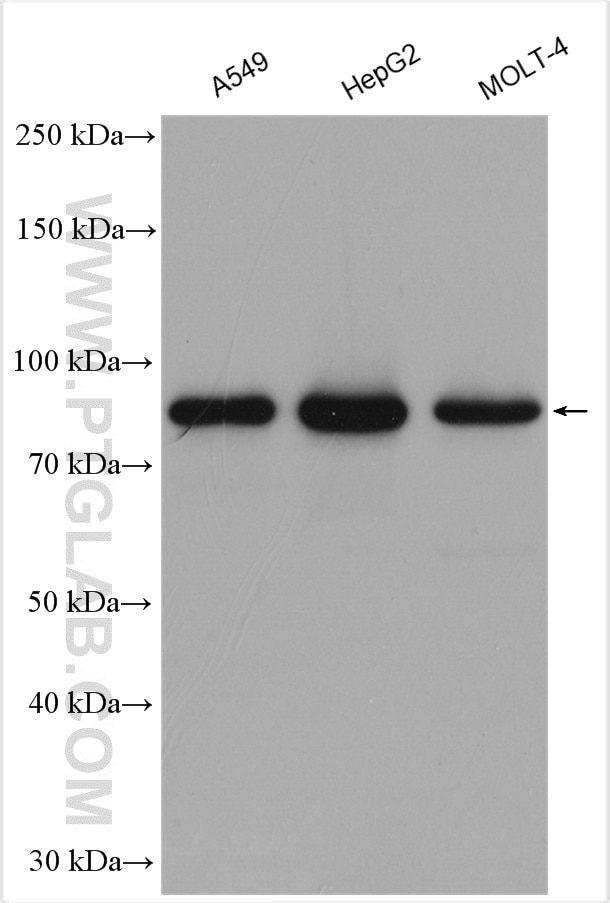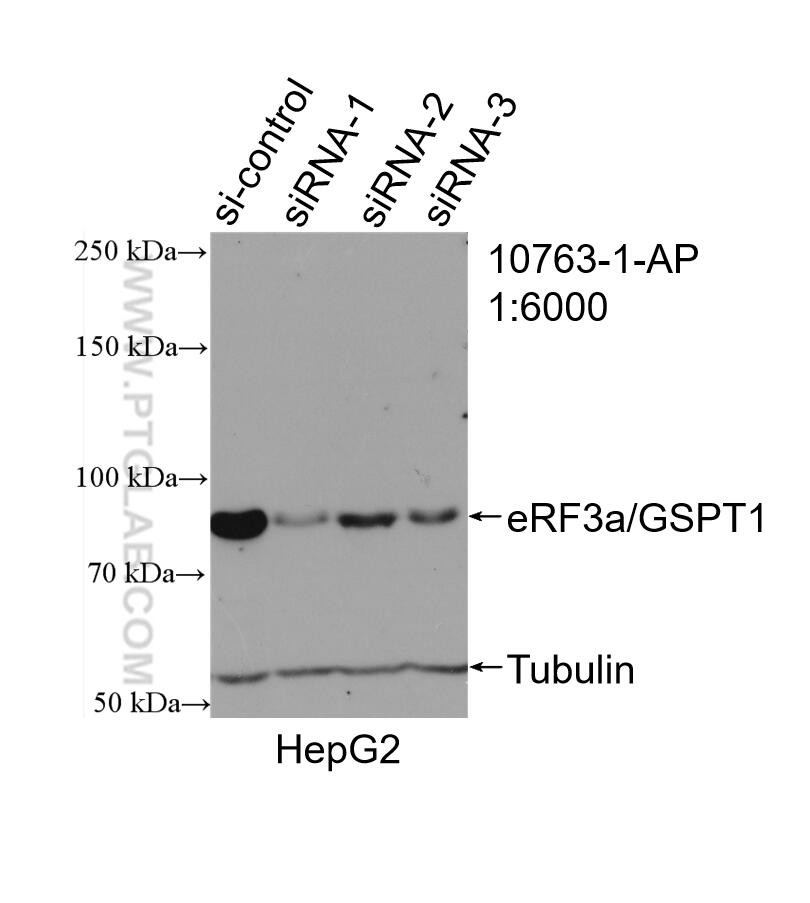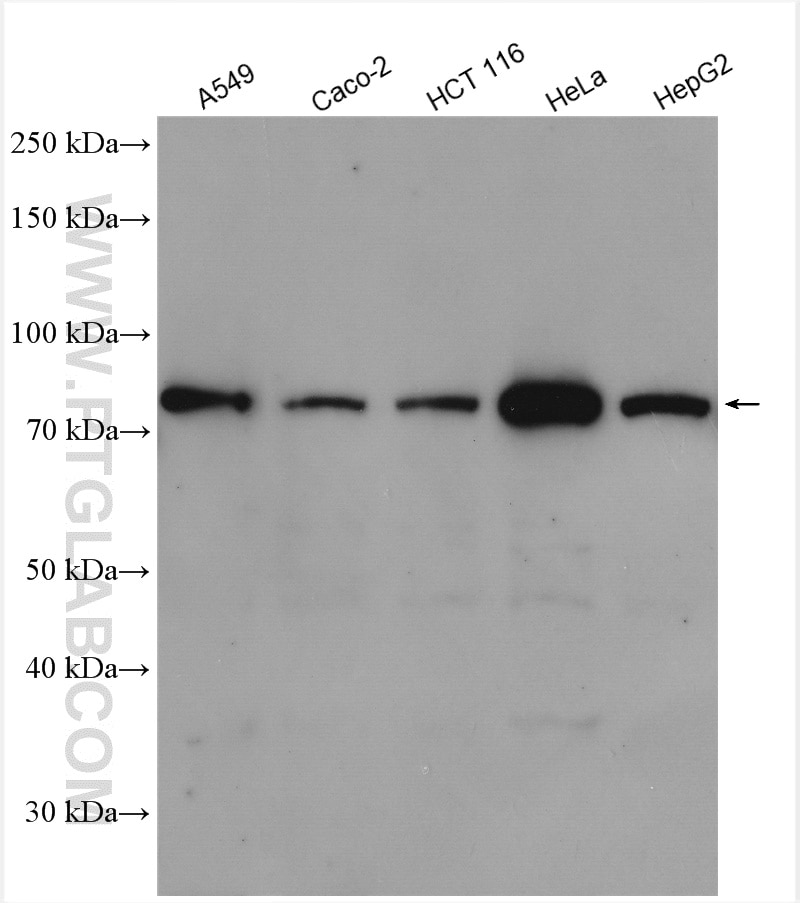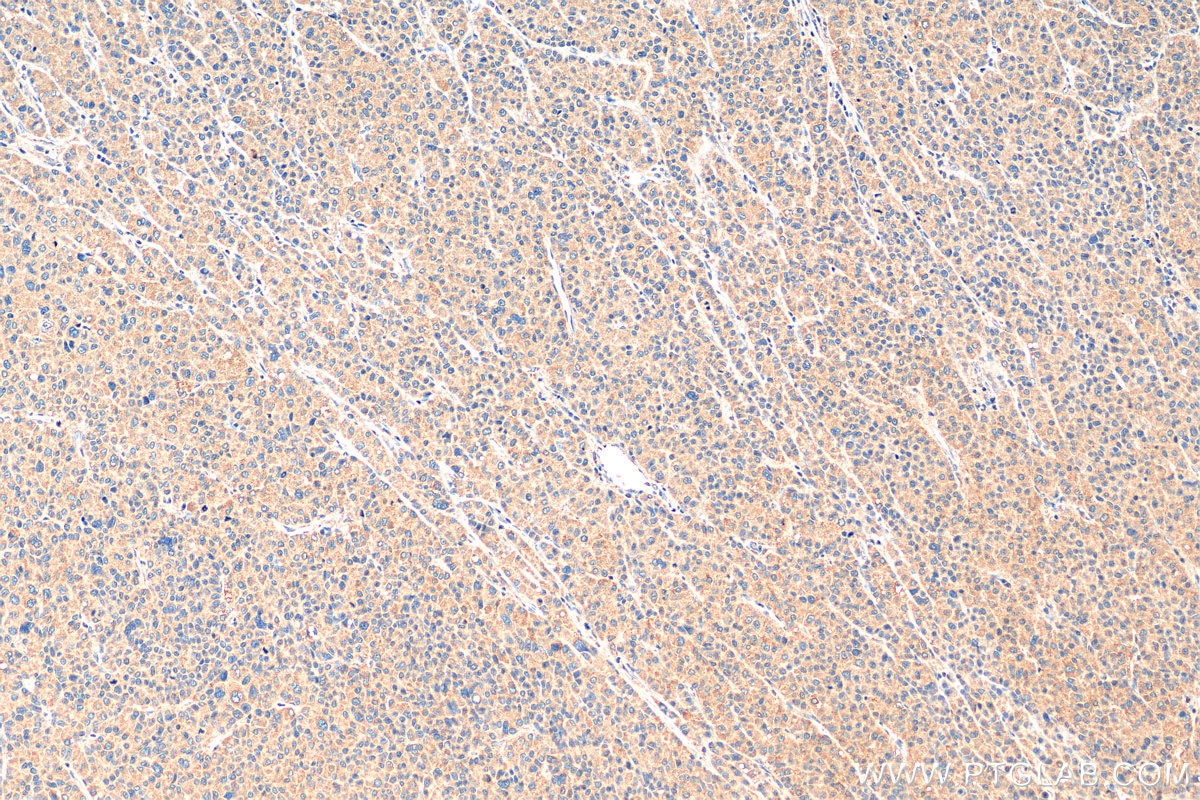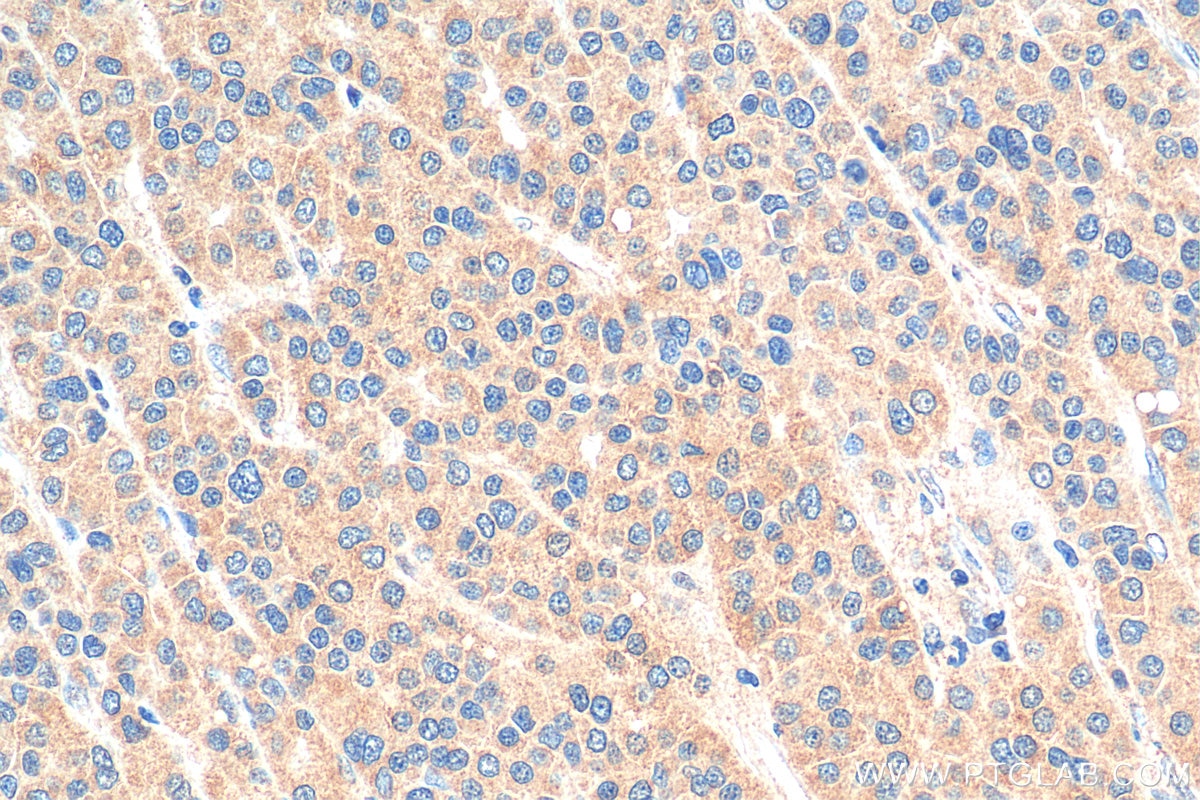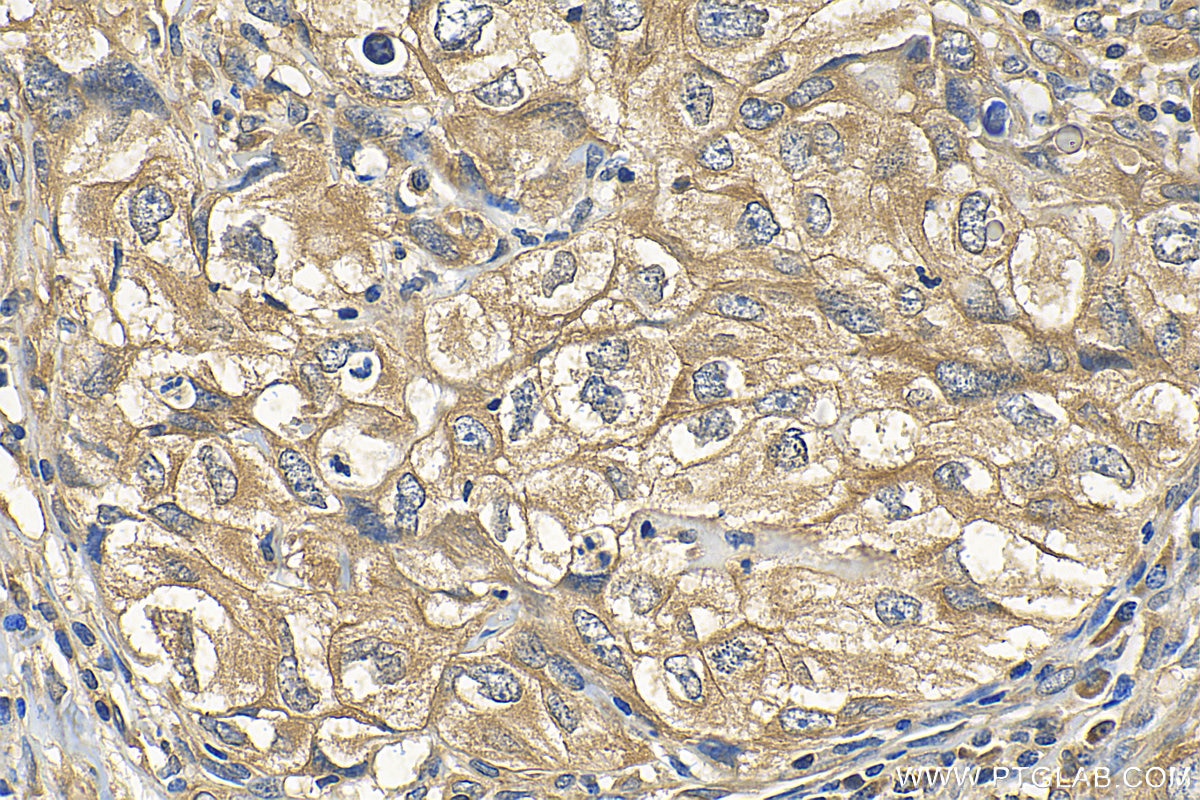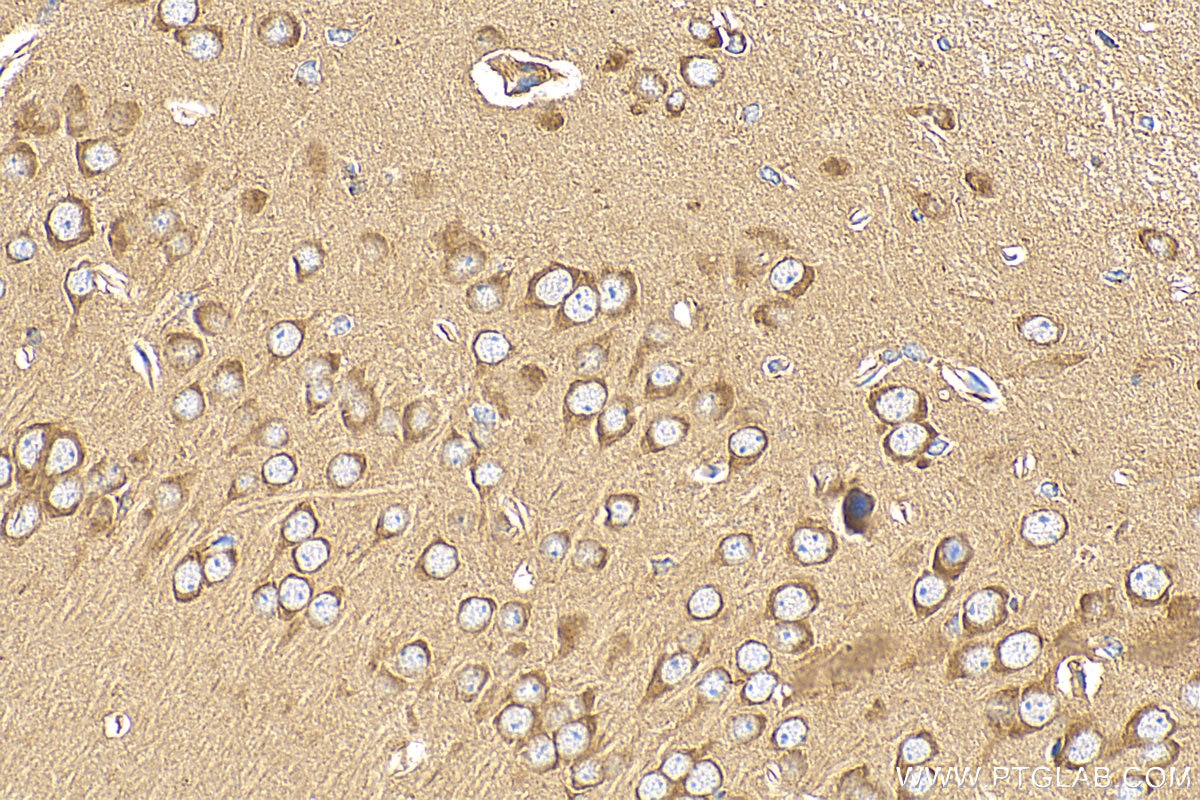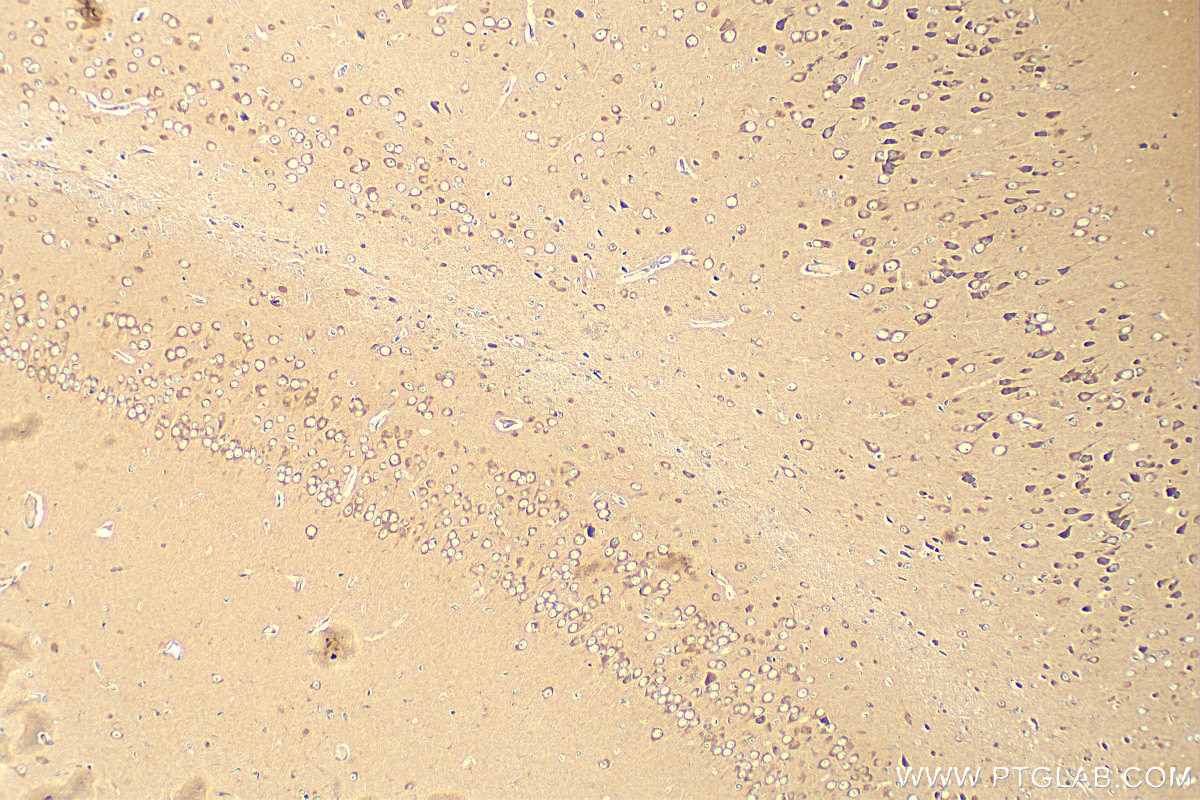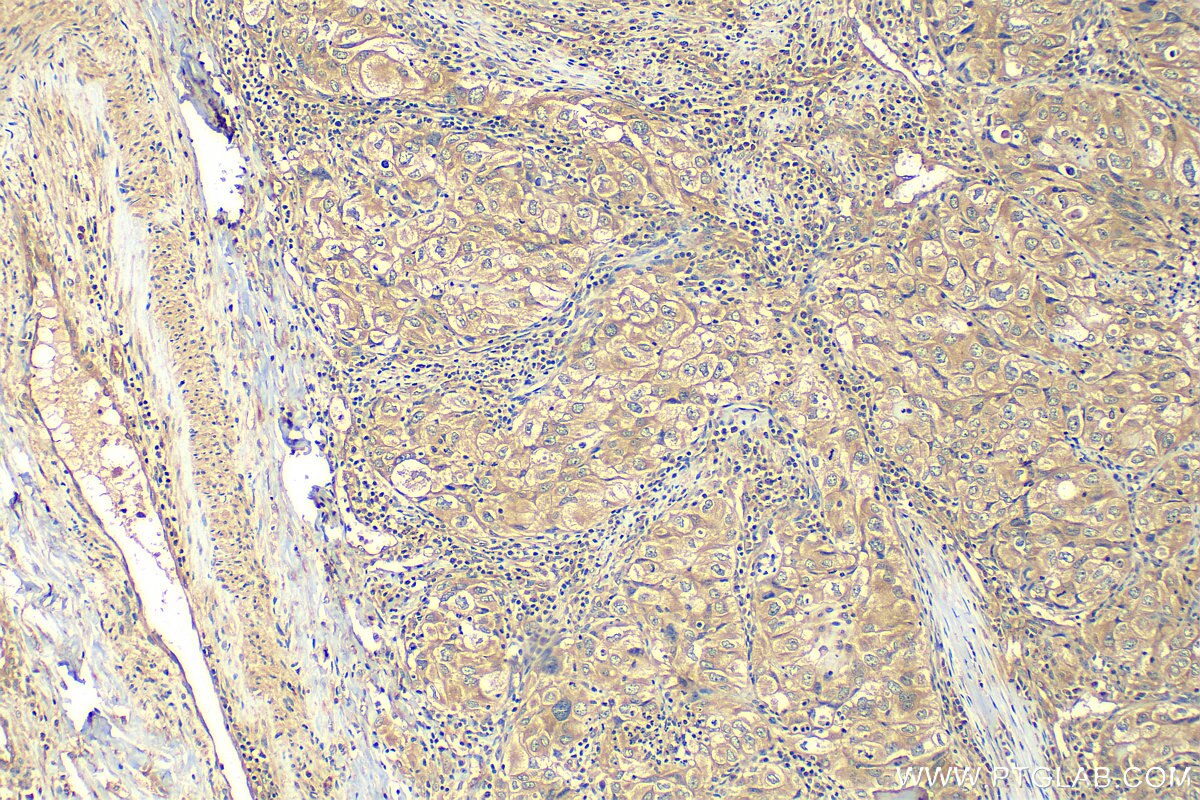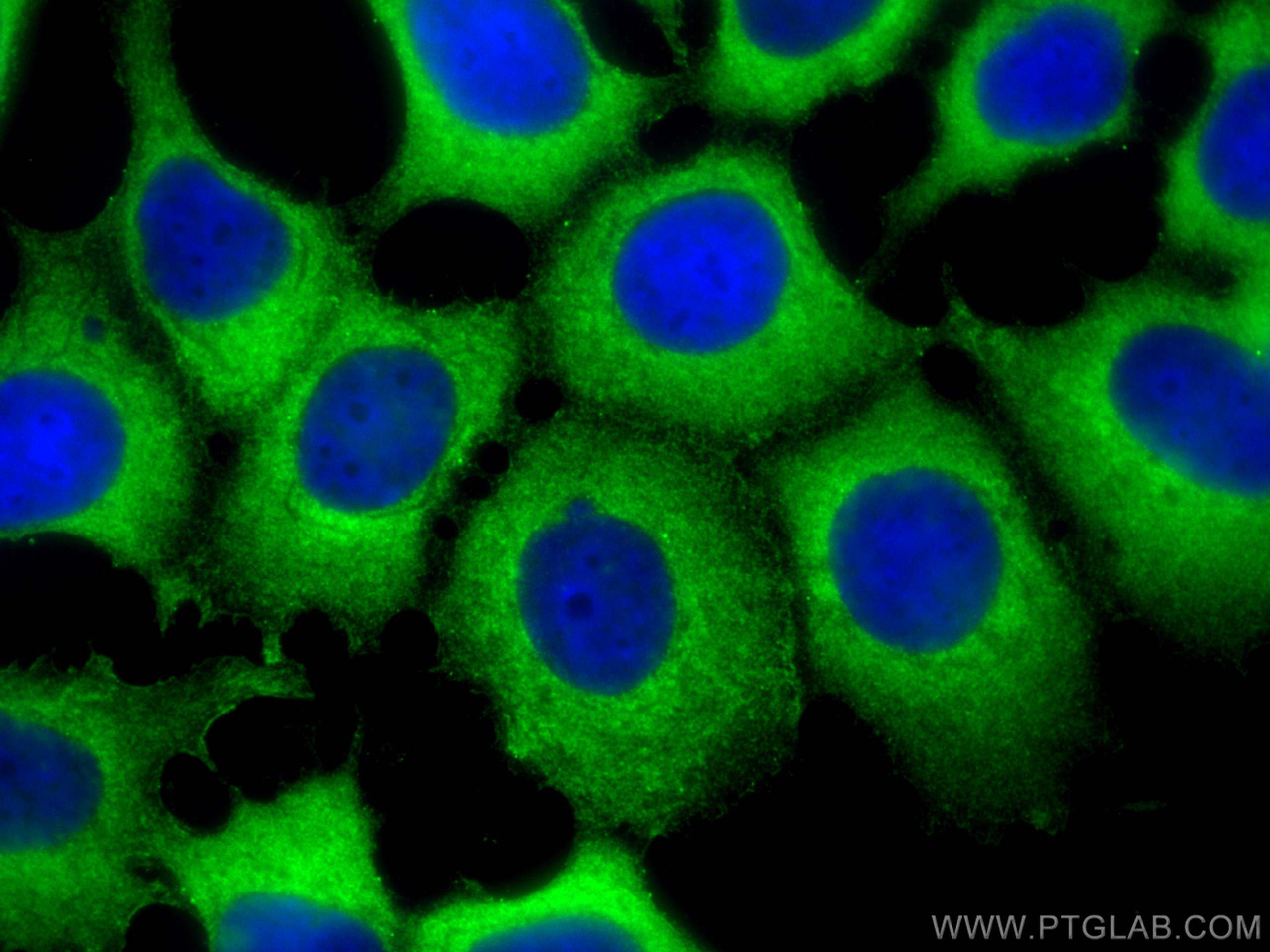- Featured Product
- KD/KO Validated
eRF3a/GSPT1 Polyklonaler Antikörper
eRF3a/GSPT1 Polyklonal Antikörper für WB, IHC, IF/ICC, ELISA
Wirt / Isotyp
Kaninchen / IgG
Getestete Reaktivität
human, Maus, Ratte
Anwendung
WB, IHC, IF/ICC, ELISA
Konjugation
Unkonjugiert
Kat-Nr. : 10763-1-AP
Synonyme
Galerie der Validierungsdaten
Geprüfte Anwendungen
| Erfolgreiche Detektion in WB | A549-Zellen, Caco-2-Zellen, HCT 116-Zellen, HeLa-Zellen, HepG2-Zellen, MOLT-4-Zellen |
| Erfolgreiche Detektion in IHC | humanes Leberkarzinomgewebe, humanes Lungenkarzinomgewebe, Maushirngewebe Hinweis: Antigendemaskierung mit TE-Puffer pH 9,0 empfohlen. (*) Wahlweise kann die Antigendemaskierung auch mit Citratpuffer pH 6,0 erfolgen. |
| Erfolgreiche Detektion in IF/ICC | MCF-7-Zellen |
Empfohlene Verdünnung
| Anwendung | Verdünnung |
|---|---|
| Western Blot (WB) | WB : 1:2000-1:12000 |
| Immunhistochemie (IHC) | IHC : 1:50-1:500 |
| Immunfluoreszenz (IF)/ICC | IF/ICC : 1:200-1:800 |
| It is recommended that this reagent should be titrated in each testing system to obtain optimal results. | |
| Sample-dependent, check data in validation data gallery | |
Veröffentlichte Anwendungen
| KD/KO | See 2 publications below |
| WB | See 14 publications below |
| IHC | See 2 publications below |
| IF | See 4 publications below |
Produktinformation
10763-1-AP bindet in WB, IHC, IF/ICC, ELISA eRF3a/GSPT1 und zeigt Reaktivität mit human, Maus, Ratten
| Getestete Reaktivität | human, Maus, Ratte |
| In Publikationen genannte Reaktivität | human, Maus |
| Wirt / Isotyp | Kaninchen / IgG |
| Klonalität | Polyklonal |
| Typ | Antikörper |
| Immunogen | eRF3a/GSPT1 fusion protein Ag1184 |
| Vollständiger Name | G1 to S phase transition 1 |
| Berechnetes Molekulargewicht | 68 aa, 4 kDa |
| Beobachtetes Molekulargewicht | 80-85 kDa |
| GenBank-Zugangsnummer | BC009503 |
| Gene symbol | GSPT1 |
| Gene ID (NCBI) | 2935 |
| Konjugation | Unkonjugiert |
| Form | Liquid |
| Reinigungsmethode | Antigen-Affinitätsreinigung |
| Lagerungspuffer | PBS mit 0.02% Natriumazid und 50% Glycerin pH 7.3. |
| Lagerungsbedingungen | Bei -20°C lagern. Nach dem Versand ein Jahr lang stabil Aliquotieren ist bei -20oC Lagerung nicht notwendig. 20ul Größen enthalten 0,1% BSA. |
Hintergrundinformationen
The eukaryotic Release Factor 3 (eRF3) is a GTPase that associates with eRF1 in a complex that mediates translation termination. Eukaryotic release factor 3 (eRF3) has many functions in eukaryotic cells, such as controlling the regulation of the cell cycle at the G1 to S phase transition, and regulating protein synthesis as a GTP dependent stimulator of eRF1 in translation termination. It was also reported to play a key role as an initiator of the mRNA degradation machinery in the recycling of ribosomes in successive cycles of translation,and probably also in transcription regulation. eRF3a, also known as GSPT1, is one subunit of eRF3(PMID:15917414,12923185). It involves in translation termination in response to the termination codons UAA, UAG and UGA and stimulates the activity of ERF1. eRF3a/GSPT1 exists some isoforms with MV 69 kDa and 56 kDa. Identification of a processed form of eRF3a/GSPT1 as a BIR3-binding protein-Using a GST-BIR3 fusion protein as an affinity reagent to purify new IAP binding proteins from extracts of human cells and mouse tissues, we previously isolated 3 proteins of molecular weights 23, 38 and 80 kDa. 80 kDa band confirmed that it is a processed form of the human GSPT1/eRF3a protein, lacking the first 69 residues(PMID: 12865429).
Protokolle
| Produktspezifische Protokolle | |
|---|---|
| WB protocol for eRF3a/GSPT1 antibody 10763-1-AP | Protokoll herunterladen |
| IHC protocol for eRF3a/GSPT1 antibody 10763-1-AP | Protokoll herunterladen |
| IF protocol for eRF3a/GSPT1 antibody 10763-1-AP | Protokoll herunterladen |
| Standard-Protokolle | |
|---|---|
| Klicken Sie hier, um unsere Standardprotokolle anzuzeigen |
Publikationen
| Species | Application | Title |
|---|---|---|
Nature A novel cereblon modulator recruits GSPT1 to the CRL4(CRBN) ubiquitin ligase.
| ||
Mol Cell Spatiotemporal Proteomic Analysis of Stress Granule Disassembly Using APEX Reveals Regulation by SUMOylation and Links to ALS Pathogenesis. | ||
Mol Cell Mammalian hyperplastic discs homolog EDD regulates miRNA-mediated gene silencing. | ||
Cardiovasc Res Readthrough of nonsense mutation W822X in the SCN5A gene can effectively restore expression of cardiac Na+ channels.
| ||
J Biol Chem A Novel Rac1-GSPT1 Signaling Pathway Controls Astrogliosis Following Central Nervous System Injury. | ||
Mol Cancer Nicotine-mediated invasion and migration of non-small cell lung carcinoma cells by modulating STMN3 and GSPT1 genes in an ID1-dependent manner. |
